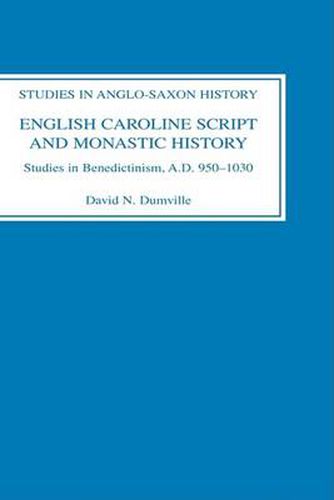Readings Newsletter
Become a Readings Member to make your shopping experience even easier.
Sign in or sign up for free!
You’re not far away from qualifying for FREE standard shipping within Australia
You’ve qualified for FREE standard shipping within Australia
The cart is loading…






Caroline minuscule script was adopted in England in the mid-tenth century in imitation of Continental usage. A badge of ecclesiastical reform, it was practised in Benedictine scriptoria but was also taken up by members of the royal writing office; the chancery occupied an important place in the pioneering of calligraphic fashions. During its approximately two-century history in England, Caroline script developed a number of forms, in part reflecting different tendencies within the Reform-cause. The Rule of St Benedict was focal for this movement. In the aftermath of the final Scandinavian conquest of England (AD1016) a Canterbury master-scribe created the form of Caroline writing which was to become a mark of Englishness and outlive the Norman Conquest. In the closing chapter its inventor’s career is discussed and his achievement assessed. This volume offers analysis of manuscript evidence as a basis for the cultural and ecclesiastical history of late Anglo-Saxon England. DAVID N. DUMVILLE is Reader in Early Medieval History and Culture of the British Isles at the University of Cambridge.
$9.00 standard shipping within Australia
FREE standard shipping within Australia for orders over $100.00
Express & International shipping calculated at checkout
Caroline minuscule script was adopted in England in the mid-tenth century in imitation of Continental usage. A badge of ecclesiastical reform, it was practised in Benedictine scriptoria but was also taken up by members of the royal writing office; the chancery occupied an important place in the pioneering of calligraphic fashions. During its approximately two-century history in England, Caroline script developed a number of forms, in part reflecting different tendencies within the Reform-cause. The Rule of St Benedict was focal for this movement. In the aftermath of the final Scandinavian conquest of England (AD1016) a Canterbury master-scribe created the form of Caroline writing which was to become a mark of Englishness and outlive the Norman Conquest. In the closing chapter its inventor’s career is discussed and his achievement assessed. This volume offers analysis of manuscript evidence as a basis for the cultural and ecclesiastical history of late Anglo-Saxon England. DAVID N. DUMVILLE is Reader in Early Medieval History and Culture of the British Isles at the University of Cambridge.